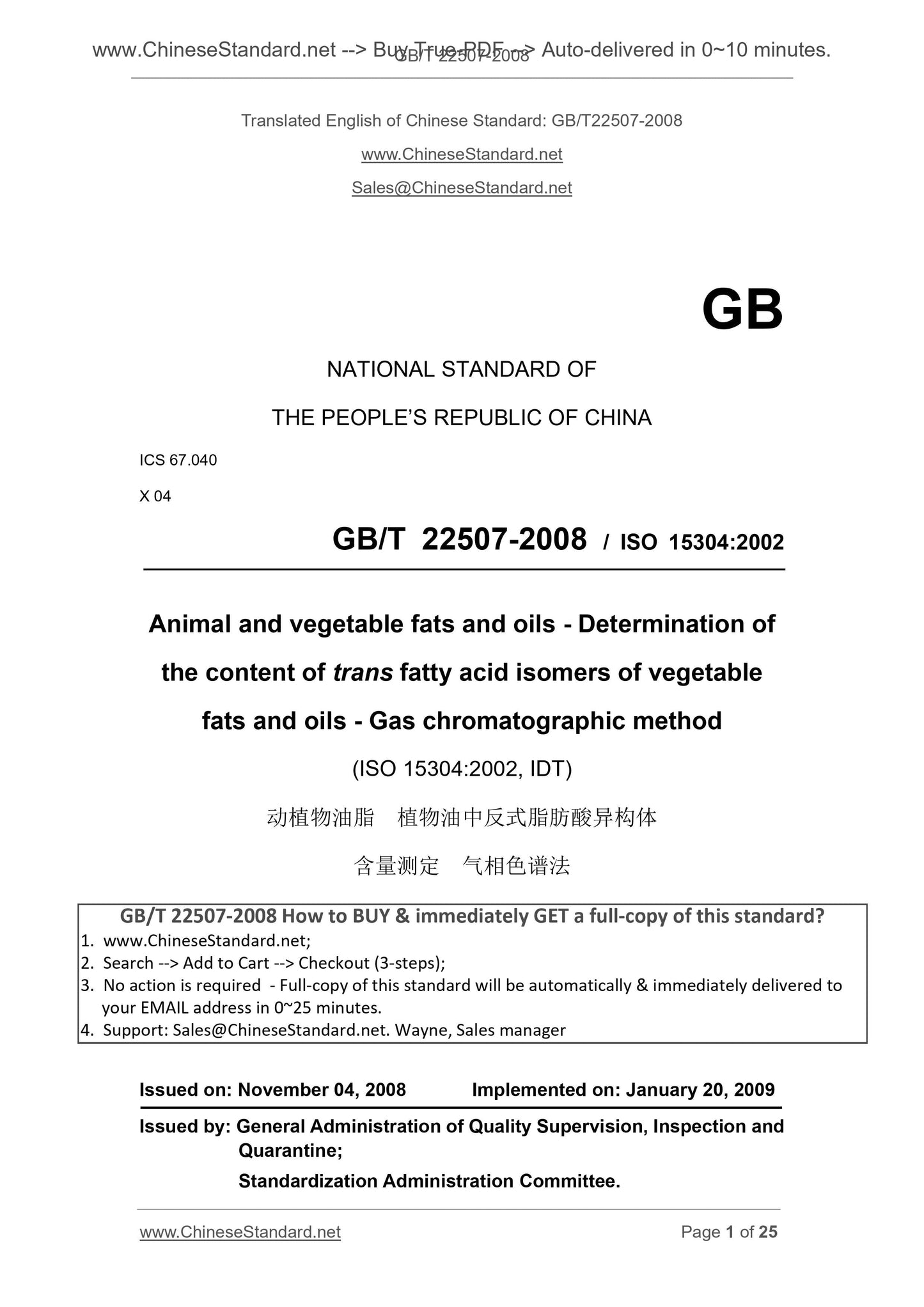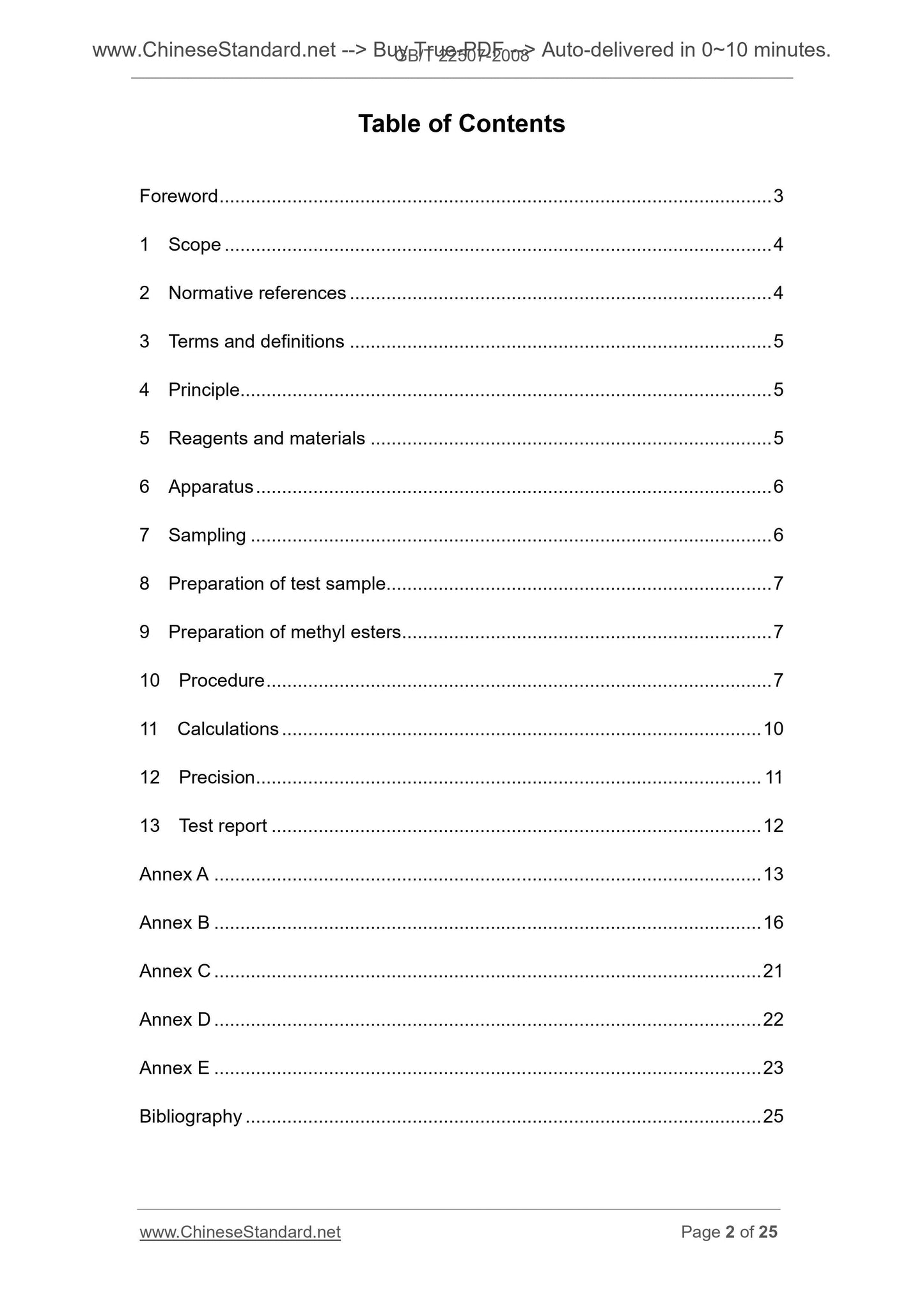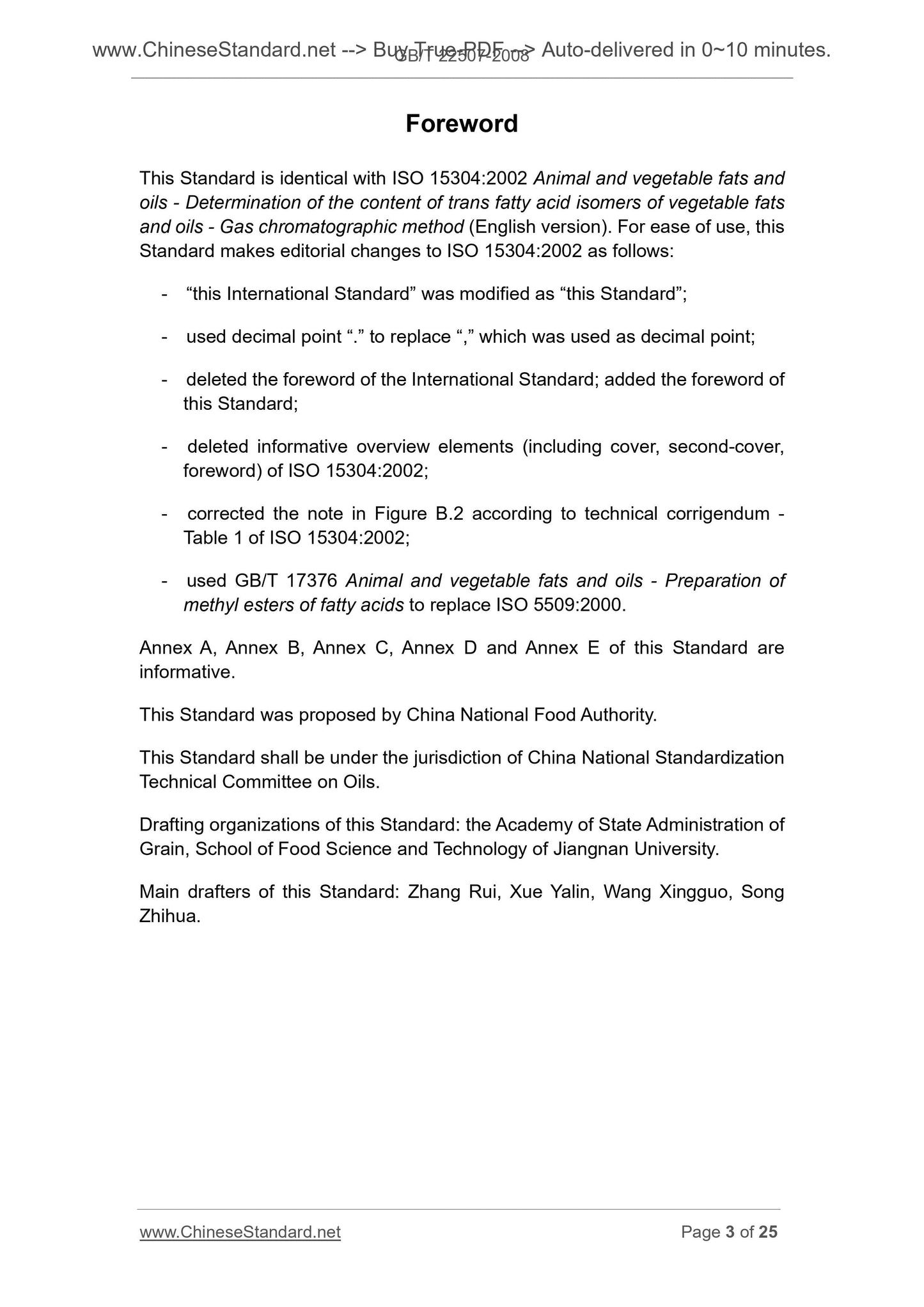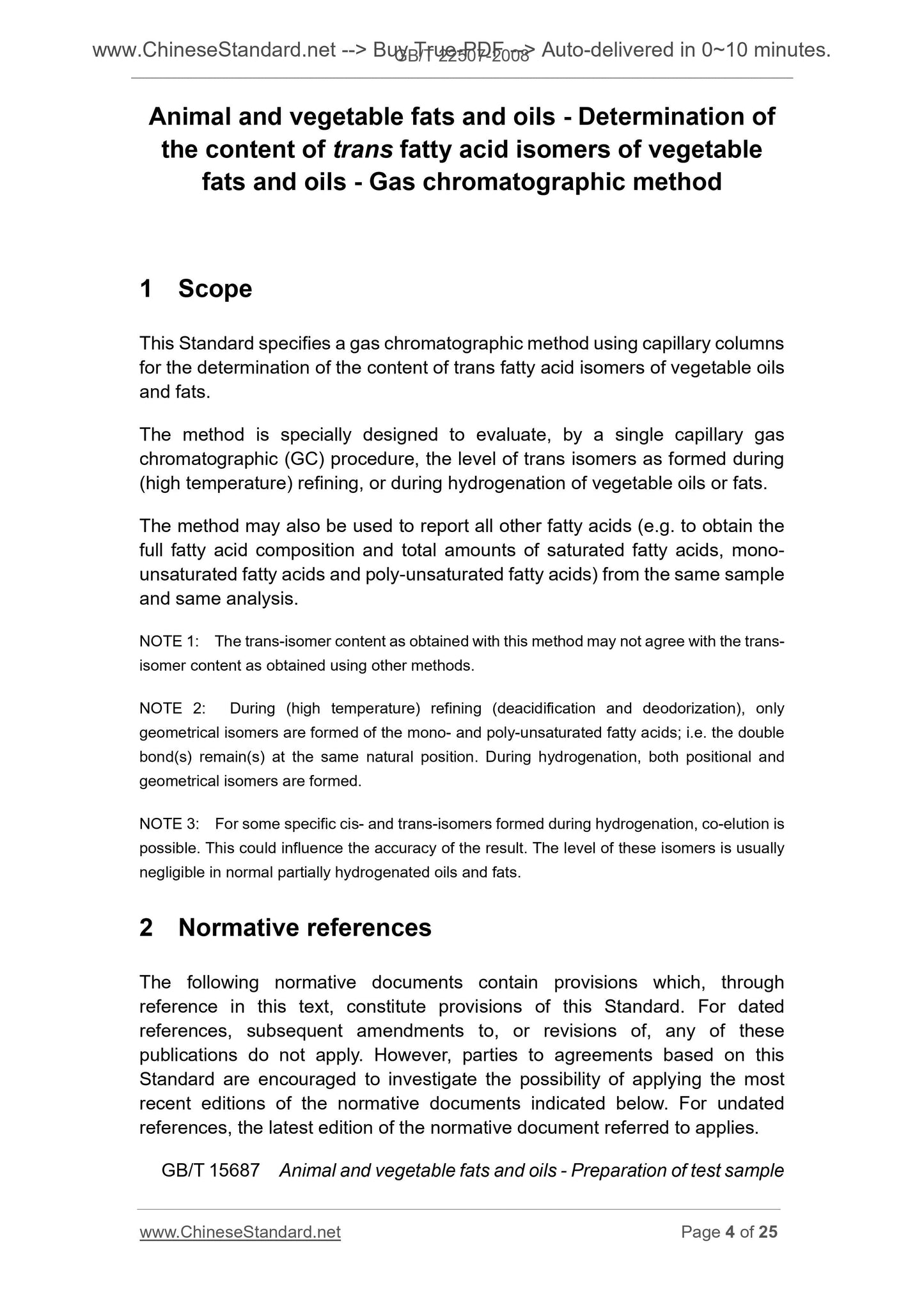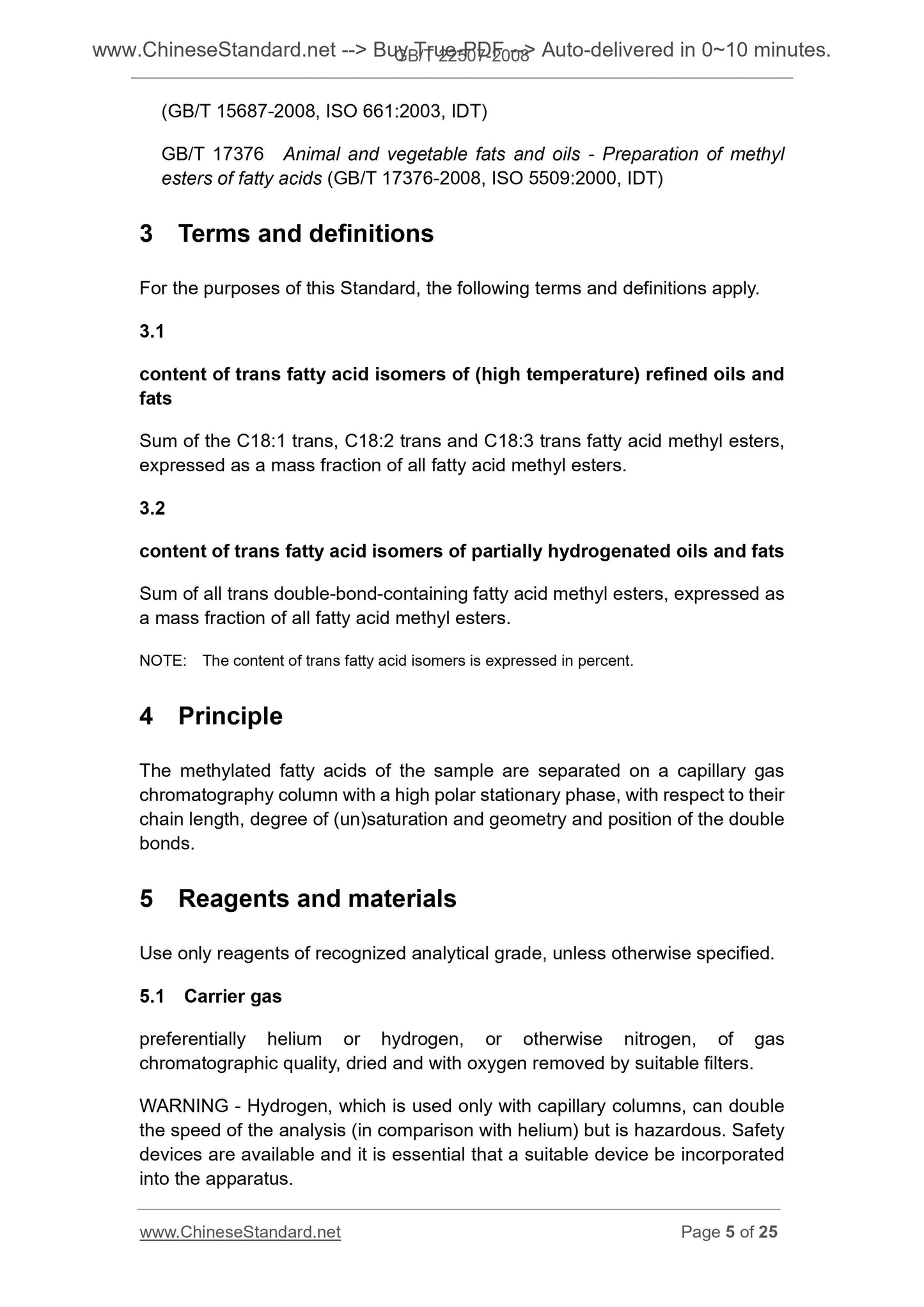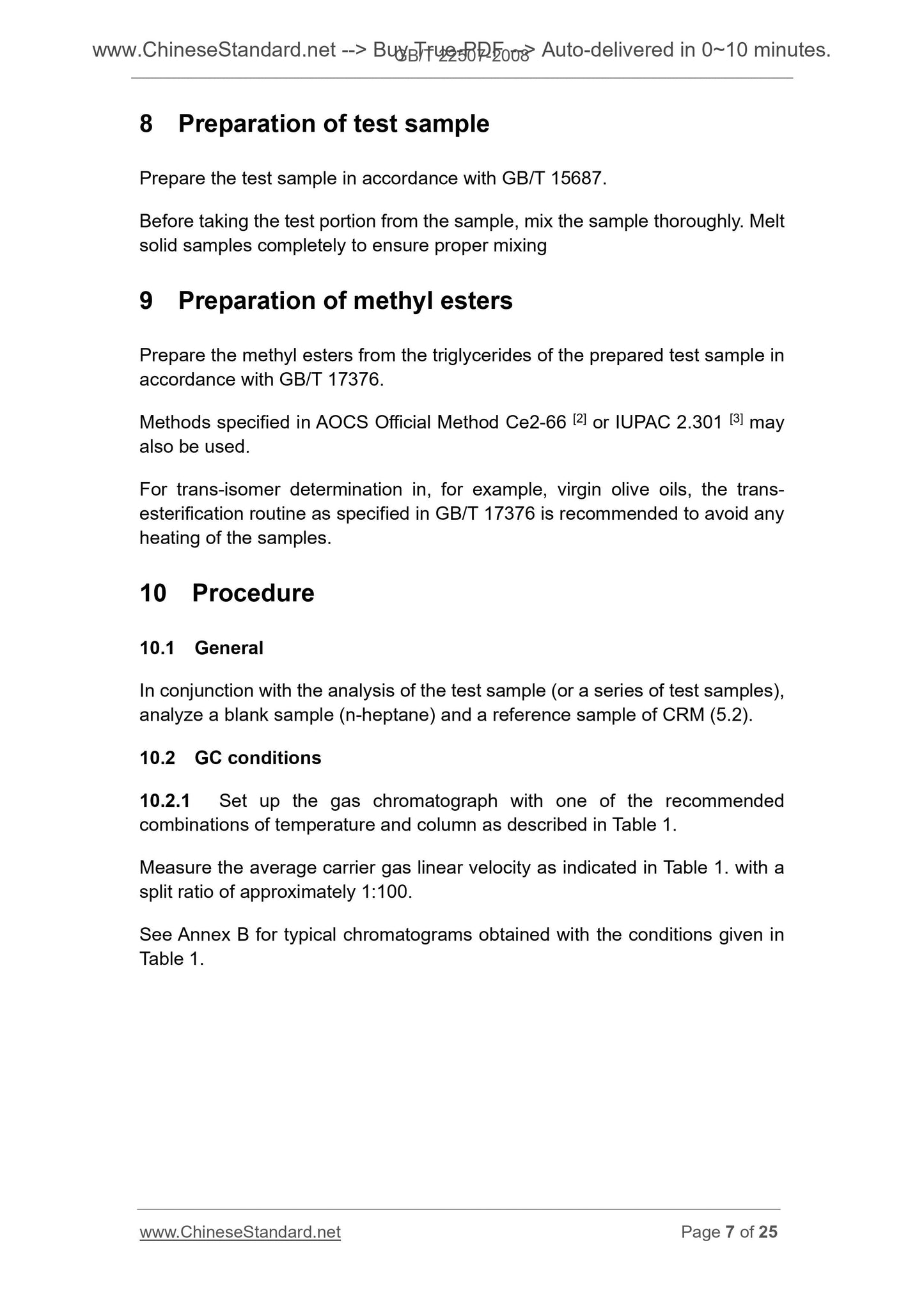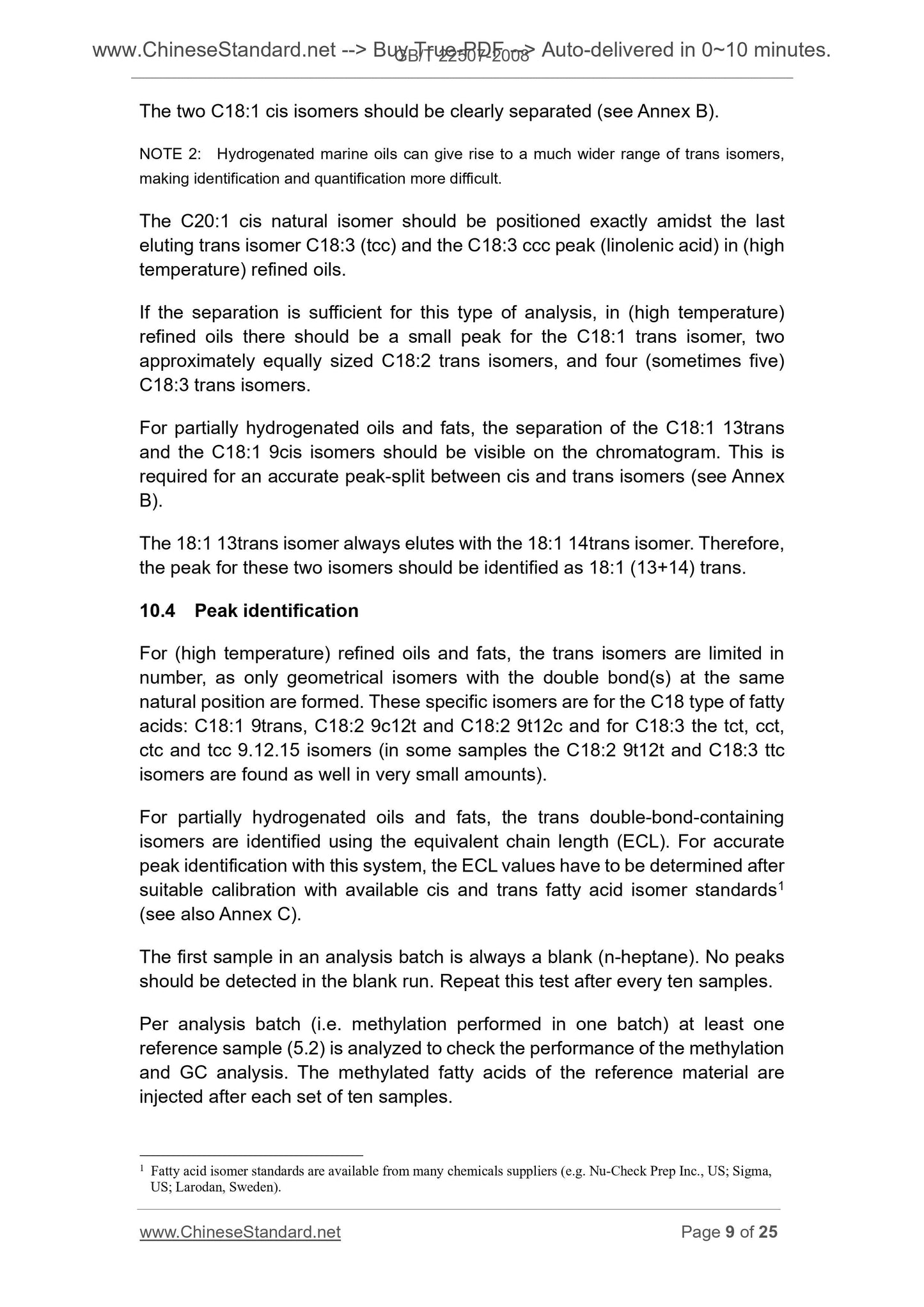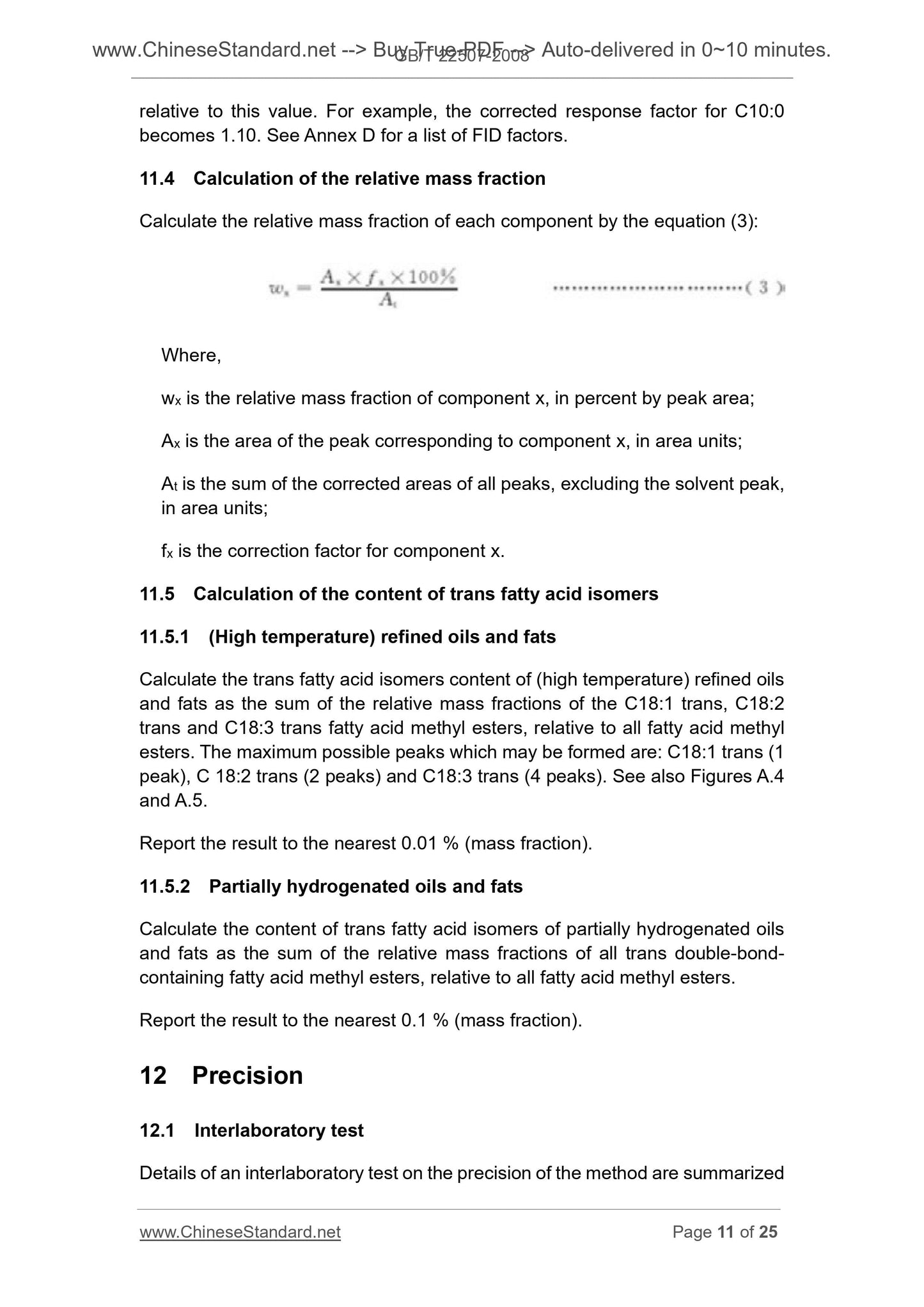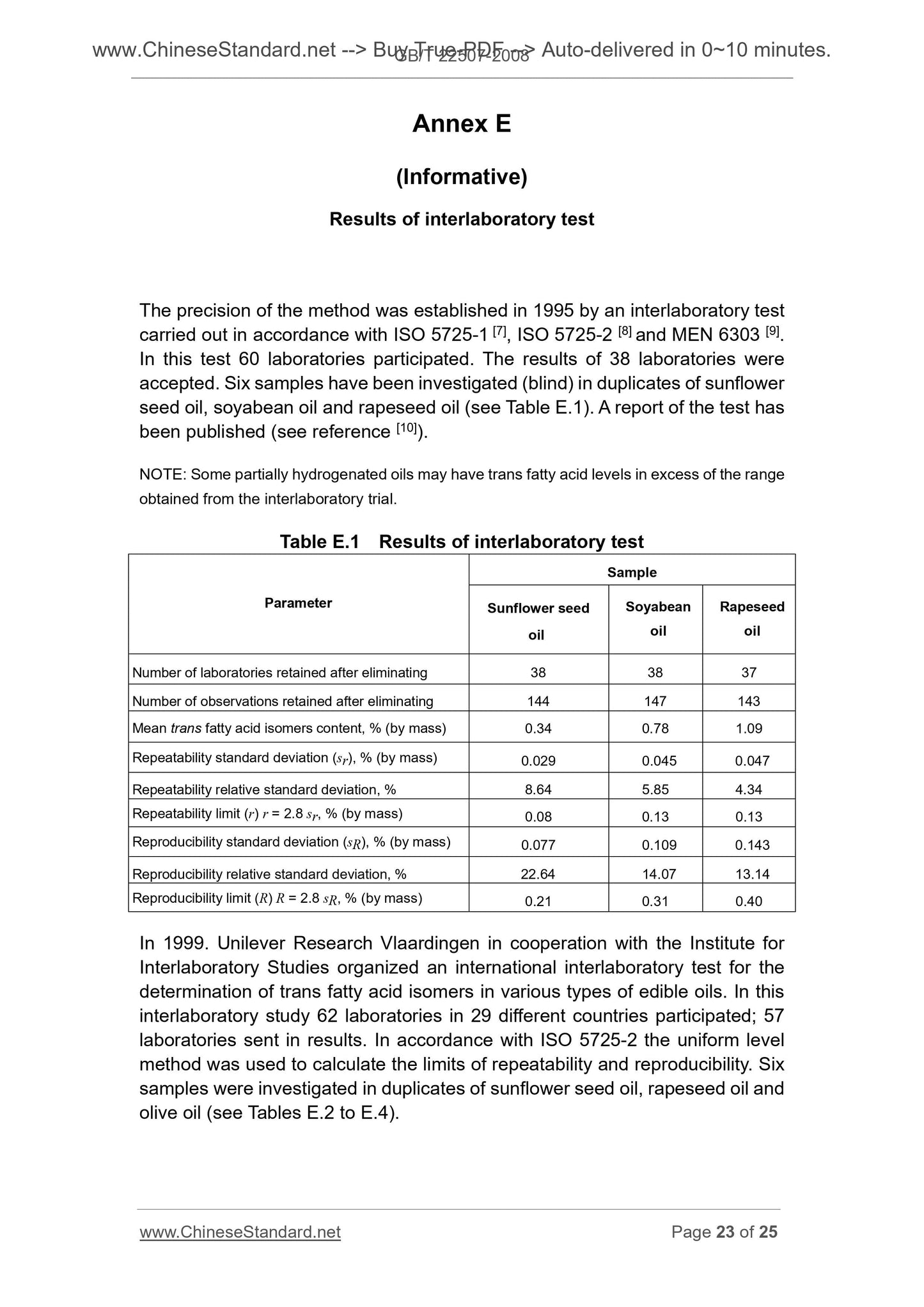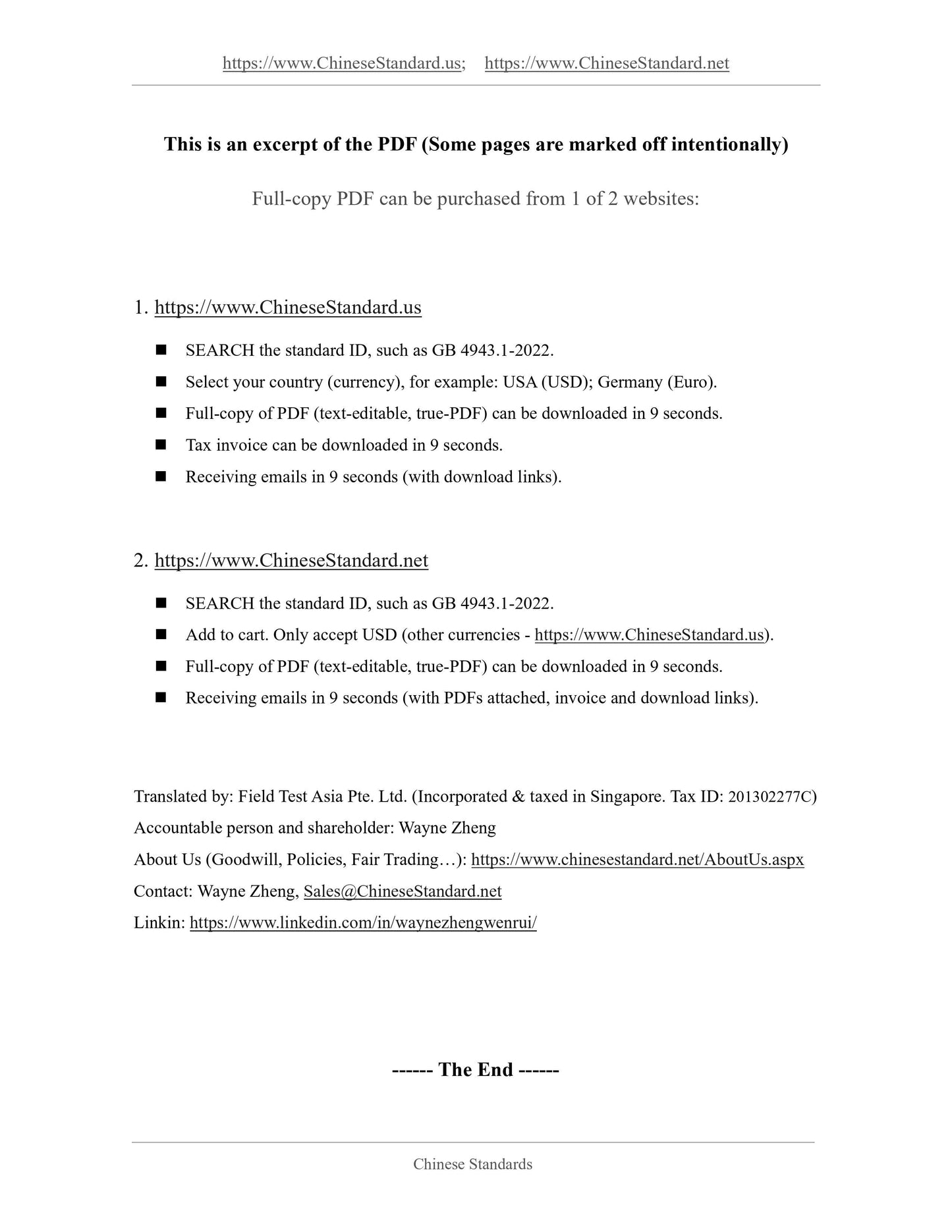1
/
of
10
www.ChineseStandard.us -- Field Test Asia Pte. Ltd.
GB/T 22507-2008 English PDF (GB/T22507-2008)
GB/T 22507-2008 English PDF (GB/T22507-2008)
Regular price
$90.00
Regular price
Sale price
$90.00
Unit price
/
per
Shipping calculated at checkout.
Couldn't load pickup availability
GB/T 22507-2008: Animal and vegetable fats and oils -- Determination of the content of trans fatty acid isomers of vegetable fats and oils -- Gas chromatographic method
Delivery: 9 seconds. Download (and Email) true-PDF + Invoice.Get Quotation: Click GB/T 22507-2008 (Self-service in 1-minute)
Newer / historical versions: GB/T 22507-2008
Preview True-PDF
Scope
This standard specifies the vegetable oil trans fatty acid isomers of determination by capillary column gas chromatography.This standard uses a single capillary column gas chromatography (GC) method for the determination of generating (high temperature) refining or hydrogenated vegetable oils trans-iso
Structure content of the body.
The same standard in the same sample analysis can also be given in the report of other fatty acids (for example. total fatty acid composition, saturated fatty acids, single
Unsaturated fatty acids and polyunsaturated fatty acids of the total).
Note 1. The trans isomer content may be obtained by the standard method of obtaining other trans isomer content is not the same.
Note 2 .( temperature) refining (deacidification and deodorization) produced only monounsaturated fatty acids and polyunsaturated fatty acids geometric isomers, such as the double bond position remains unchanged;
Hydrogenation process produces both positional isomers and geometric isomers produced.
Note 3. Some special produced by hydrogenation of cis, trans isomers may also peaks will affect the accuracy of the results. Typically, this part of the partially hydrogenated oils heterogeneous
Body may be negligible.
Basic Data
| Standard ID | GB/T 22507-2008 (GB/T22507-2008) |
| Description (Translated English) | Animal and vegetable fats and oils -- Determination of the content of trans fatty acid isomers of vegetable fats and oils -- Gas chromatographic method |
| Sector / Industry | National Standard (Recommended) |
| Classification of Chinese Standard | X04 |
| Classification of International Standard | 67.040 |
| Word Count Estimation | 20,228 |
| Date of Issue | 2008-11-04 |
| Date of Implementation | 2009-01-20 |
| Quoted Standard | GB/T 15687; GB/T 17376 |
| Adopted Standard | ISO 15304-2002, IDT |
| Regulation (derived from) | National Standard Approval Announcement 2008 No.18 (Total No.131) |
| Issuing agency(ies) | General Administration of Quality Supervision, Inspection and Quarantine of the People's Republic of China, Standardization Administration of the People's Republic of China |
| Summary | This standard specifies the vegetable oil content of trans fatty acid isomers determined by capillary column gas chromatography. This standard uses a single capillary column gas chromatography. Determination of suitable hydrogenated vegetable oils or refined to produce trans isomer. This standard analysis of the same sample in the same fatty acids can also be given in other reports. |
Share
